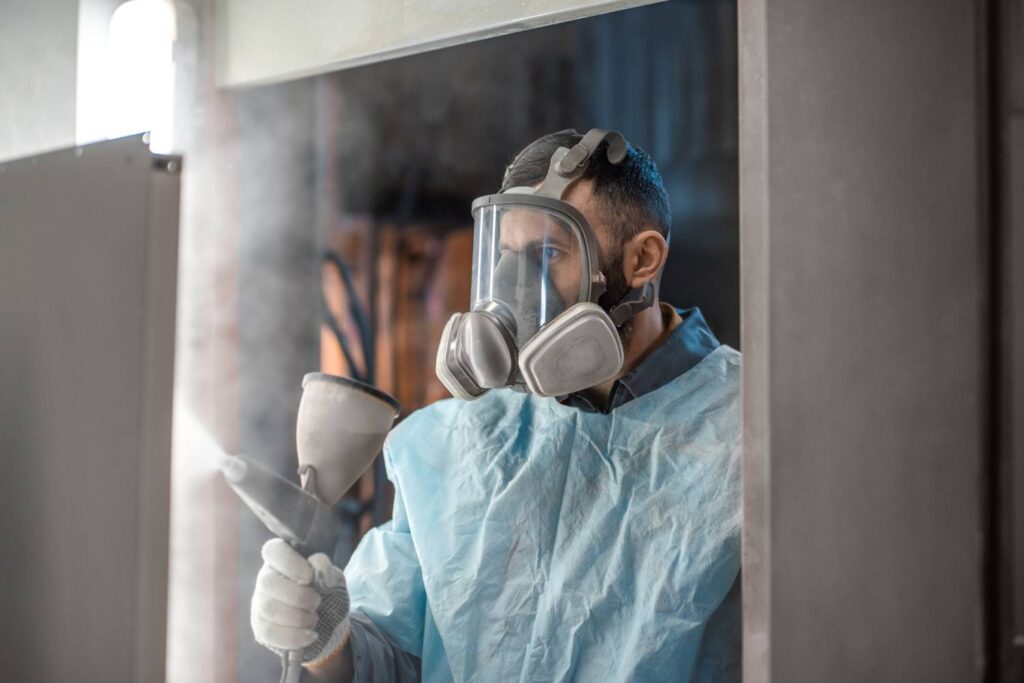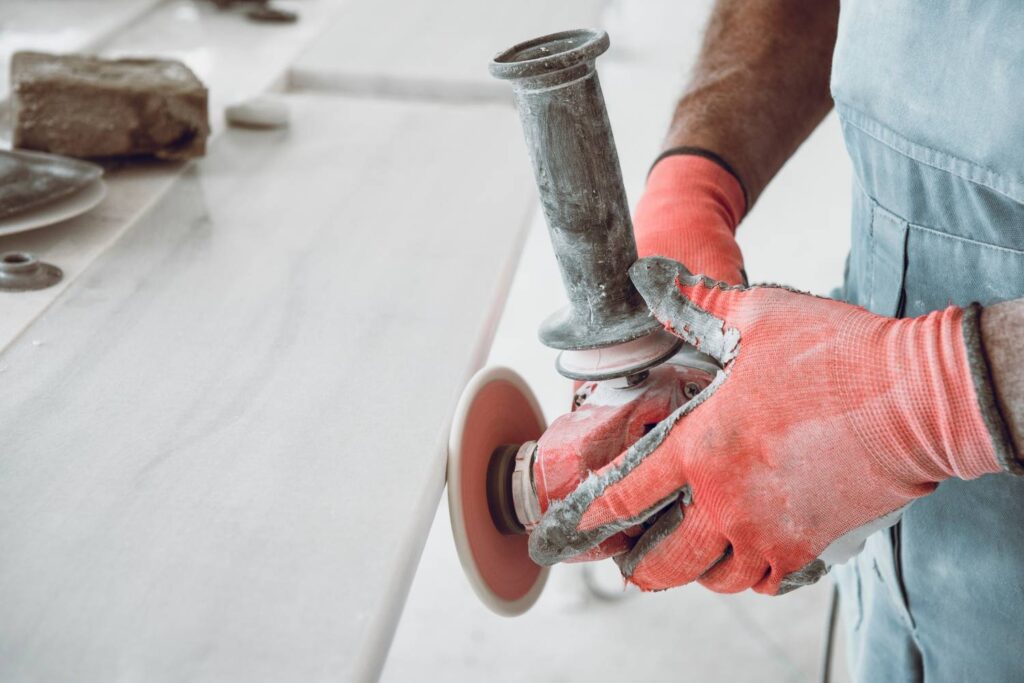The metal finishing industry is undergoing a significant transformation driven by technological advancements, sustainability demands, and evolving market needs.
As manufacturers seek to enhance metal products’ durability, aesthetics, and environmental friendliness, new trends and innovations are reshaping the sector.
This blog explores the latest developments in metal finishing, focusing on technological advancements, eco-friendly practices, and the industry’s future outlook.
Let’s get straight to the point
Technological innovations such as advanced coatings, nanotechnology, and graphene plating are transforming the metal finishing industry.
These advancements, along with eco-friendly practices like green electroplating and PEO, are enhancing metal product performance while reducing environmental impact, positioning the industry for future growth and sustainability.

How Are Technological Advancements Revolutionising the Metal Finishing Process?
Hydrophobic and Hydrophilic Coatings
Hydrophobic and hydrophilic coatings have emerged as game-changing innovations in metal finishing.
- Hydrophobic Coatings: These coatings repel water, making surfaces easier to clean and maintain. They are particularly beneficial in public infrastructure and consumer products exposed to water and contaminants, ensuring enhanced durability and reduced maintenance.
- Hydrophilic Coatings: In contrast, hydrophilic coatings attract water, providing improved lubrication. These are especially useful in applications like medical devices, where reduced friction can significantly enhance performance and longevity.
These coatings have greatly improved the functionality and lifespan of metal surfaces, offering tailored solutions across various industries.
Nanotechnology in Coatings
Nanotechnology has brought about ultra-thin coatings that significantly enhance metal surfaces without adding bulk or weight.
Key Benefits:
- Scratch Resistance: Helps maintain the surface integrity of products in harsh environments.
- Antimicrobial Properties: Crucial for applications in healthcare and food industries.
- Enhanced Electrical Conductivity: Particularly beneficial for electronics and automotive industries.
Nanotech coatings have opened new possibilities in metal finishing, offering unmatched performance enhancements and expanding the range of applications.
Graphene Plating
Graphene, one of the strongest and thinnest materials known, is revolutionising metal finishing through its application in metal plating.
Advantages:
- Exceptional Strength: Graphene enhances the structural integrity of metal components.
- Flexibility and Conductivity: It is ideal for high-performance sectors like renewable energy, automotive, and industrial components.
Graphene plating will lead to more efficient solar panels and robust automotive parts, marking a significant leap forward in metal finishing technology.
Green Electroplating
Environmental concerns have driven the development of green electroplating techniques, which use less toxic materials and more sustainable processes.
Innovations:
- Water-Based Plating Solutions: Reduces the environmental impact of the electroplating process.
- Dry Electroplating Methods: Minimises waste and hazardous emissions.
These advancements make the process safer for workers and align with global sustainability goals, ensuring that metal finishing remains environmentally responsible.
Data Analytics Integration
Integrating data analytics into metal finishing processes is transforming how manufacturers approach efficiency and quality control.
Data-Driven Insights:
- Optimisation: Identifying areas for improvement in the finishing process.
- Energy Efficiency: Reducing energy consumption and improving overall production efficiency.
- Predictive Maintenance: Minimising downtime and extending the life of machinery.
Data analytics revolutionises metal finishing by enabling continuous improvement and more informed decision-making.
Laser Surface Texturing
Laser surface texturing is a cutting-edge technique that permits precise modification of metal surfaces to enhance properties like friction and wear resistance.
Applications:
- Automotive and Aerospace: Improving surface characteristics for better performance.
- Medical Devices: Enhancing surface properties to meet specific medical needs.
The ability to tailor surface properties through laser texturing offers customised solutions, making it a significant advancement in metal finishing.

What Eco-Friendly and Sustainable Practices Are Leading the Way in Metal Finishing?
Powder Coating and E-Coating
In response to growing environmental concerns, powder coating and e-coating have emerged as leading eco-friendly alternatives in the metal finishing industry.
Powder coating involves applying a dry powder to metal surfaces, which is then cured to form a protective layer. This process emits minimal volatile organic compounds (VOCs), making it a cleaner alternative to traditional liquid coatings.
E-coating, or electrophoretic deposition, involves immersing metal parts in a water-based solution and applying an electric charge to deposit a uniform coating layer.
This method ensures consistent coverage and reduces waste, reducing environmental impact. Both powder coating and e-coating are energy-efficient processes that align with the industry’s push towards sustainability, offering high-quality finishes while minimising environmental harm.
Sustainable Metal Fabrication
Sustainable metal fabrication techniques are becoming increasingly important as companies strive to reduce their environmental footprint. Techniques such as laser cutting, welding, and using renewable energy sources are integral to minimising waste and conserving resources.
Laser cutting, for example, offers precision with minimal material waste, while advancements in welding technologies have led to more efficient and durable joints that require less material and energy.
Adopting renewable energy sources, such as solar and wind power, in metal fabrication facilities is helping to reduce the industry’s reliance on fossil fuels.
Sustainable fabrication practices reduce the environmental impact of metal production and contribute to the creation of recyclable materials and durable products. By extending the lifespan of metal components, these practices support the industry’s long-term sustainability goals.
Plasma Electrolytic Oxidation (PEO)
Plasma Electrolytic Oxidation (PEO) is a sustainable metal finishing process that forms a ceramic-like coating on metals, enhancing their hardness, wear resistance, and corrosion protection.
This technique is well-suited for harsh industrial environments where metals are exposed to extreme conditions.
PEO offers a sustainable alternative to traditional anodising processes involving toxic chemicals and generating hazardous waste. The PEO process is more environmentally friendly, producing less waste and using fewer harmful substances.
Additionally, PEO coatings are customisable, allowing manufacturers to tailor the coating’s properties to meet specific performance requirements.
Supercritical Carbon Dioxide Cleaning
Supercritical carbon dioxide cleaning is an innovative and eco-friendly method for removing contaminants from metal surfaces.
This process involves using carbon dioxide in its supercritical state—a phase where it exhibits properties of both a liquid and a gas—to clean delicate components.
Supercritical carbon dioxide is non-toxic, non-flammable, and leaves no residue, making it an ideal cleaning agent for industries that require high cleanliness levels, such as electronics and medical devices.
This cleaning method represents a significant step forward in sustainable metal finishing by eliminating the need for harmful solvents.
The Future Outlook for the Metal Finishing Industry
As the metal finishing industry continues to evolve, the trends and innovations highlighted in this blog will likely play a pivotal role in shaping its future. Integrating advanced technologies such as nanotechnology, graphene plating, and data analytics is expected to drive significant improvements in the performance and efficiency of metal finishing processes.
Simultaneously, the industry’s growing commitment to sustainability will continue influencing the adoption of eco-friendly practices. Innovations like green electroplating, PEO, and supercritical carbon dioxide cleaning demonstrate that achieving high-quality finishes while minimising environmental impact is possible.
The metal finishing industry is poised for continued growth and transformation. As manufacturers strive to meet the demands of a rapidly changing market, they must stay at the forefront of technological advancements and sustainability practices. By doing so, they can ensure that the industry remains competitive, innovative, and environmentally responsible in the years to come.
Conclusion
The metal finishing industry is experiencing a profound transformation fueled by innovative technologies and a growing commitment to sustainability.
From the development of advanced coatings like hydrophobic and hydrophilic solutions to the integration of nanotechnology and graphene plating, these advancements significantly enhance metal products’ durability, functionality, and environmental impact.
Additionally, adopting eco-friendly practices such as green electroplating, PEO, and supercritical carbon dioxide cleaning demonstrates the industry’s dedication to minimising its environmental footprint.
As these trends evolve, the metal finishing sector is well-positioned to thrive in a competitive and sustainability-conscious market.

